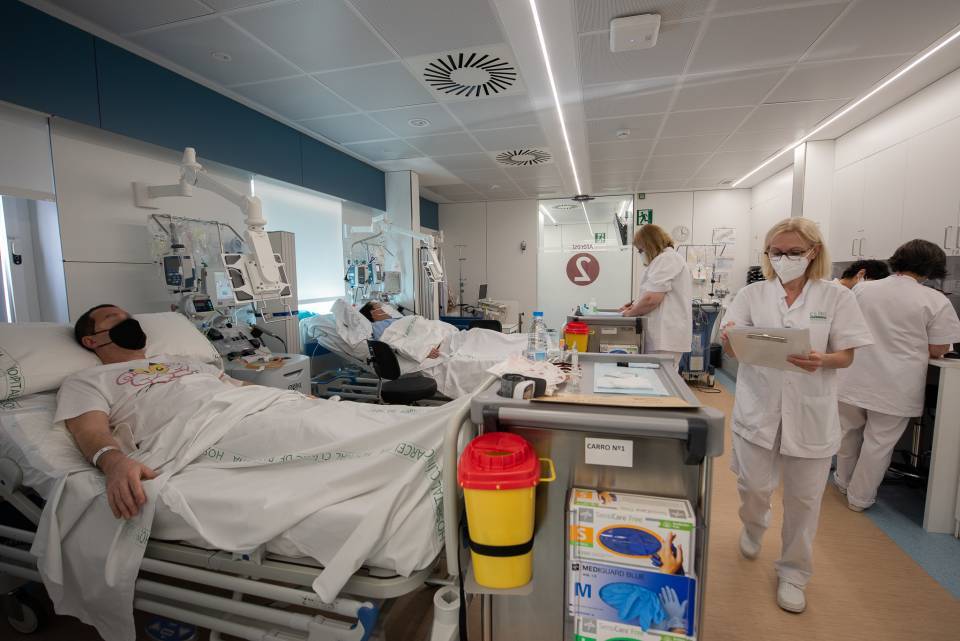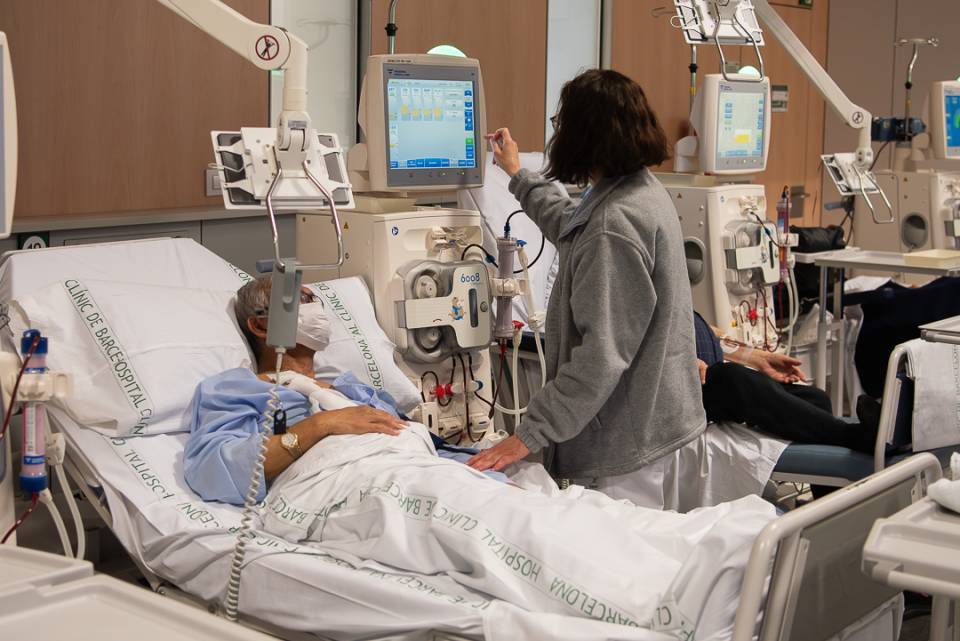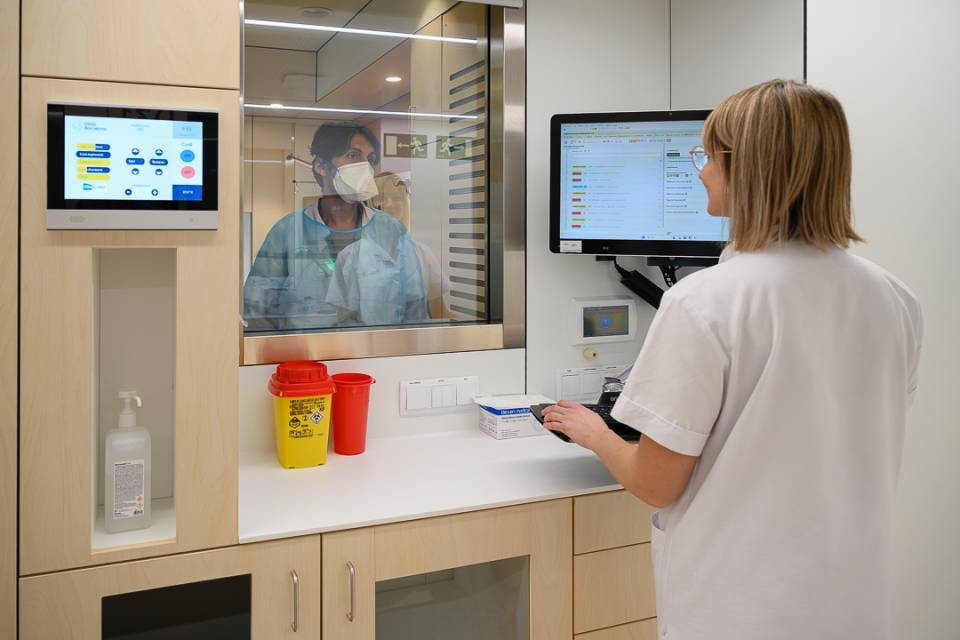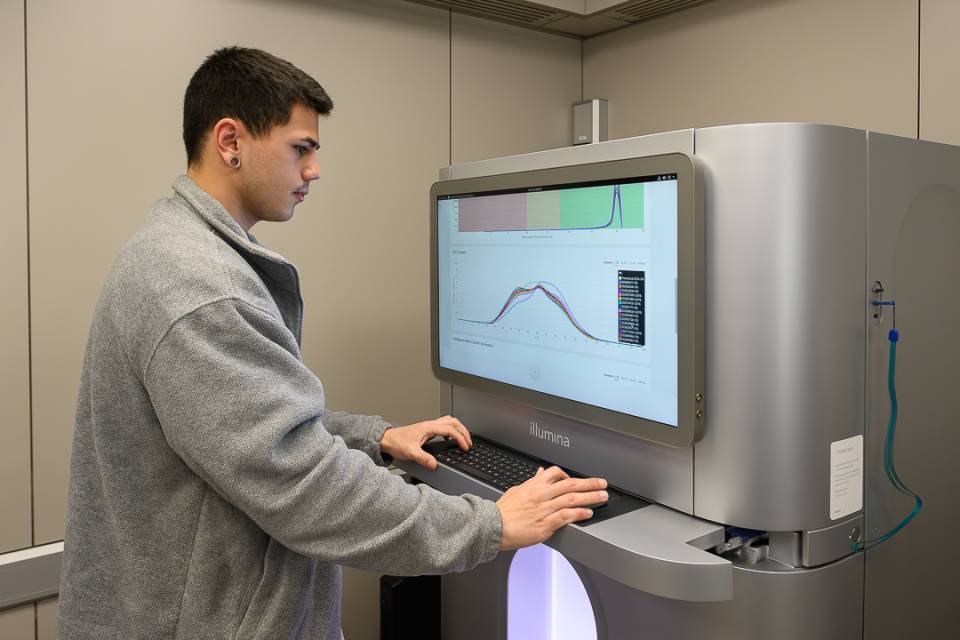In 2021, the Hospital Clínic de Barcelona Apheresis Unit, coordinated by Dr. Miquel Lozano, Dr. Joan Cid and . Dolors Perea, nursing coordinator, carried out 1,010 apheresis procedures, including therapeutic plasma exchange, cell collection for different types of cell therapy, LDL apheresis and immune absorption. These procedures were carried out on patients who had undergone various types of transplantation (haematopoietic progenitor cells, kidney, heart), refractory autoimmune diseases and severe hyperlipidaemia. The highest rise was in the collection of cells for CAR T-cell therapy: this increased by 70% in one year. This figure was achieved thanks to the commitment and dedication of all the professionals involved.
Apart from the apheresis procedures, the unit also carries out other forms of therapy such as autologous platelet-rich plasma lysates, which are prepared in collaboration with the Progenitor Cell Bank and the Pharmacy Service, in the form of eye drops and more recently as an oral gel, to treat patients with severe forms of graft-versus-host disease against the ocular and oral host.
Apheresis is the technique used to separate the components of whole blood, selecting those needed for their application in medicine and returning the rest of the components to the bloodstream. The purpose of apheresis is to extract a blood component for transfusion or the treatment of certain diseases, which require the elimination of a pathological component in the blood. The apheresis procedure consists of inserting an intravenous needle into a vein, and connecting the patient or donor to a machine that separates cells (red blood cells, white blood cells and platelets) and plasma, using sterile collection equipment consisting of bags and tubes. The blood is sent to the cell separator where it is centrifuged and the individual product to be collected is separated. The rest of the blood is returned to the patient. Apheresis can take from 30 minutes to several hours depending on the type of procedure.




